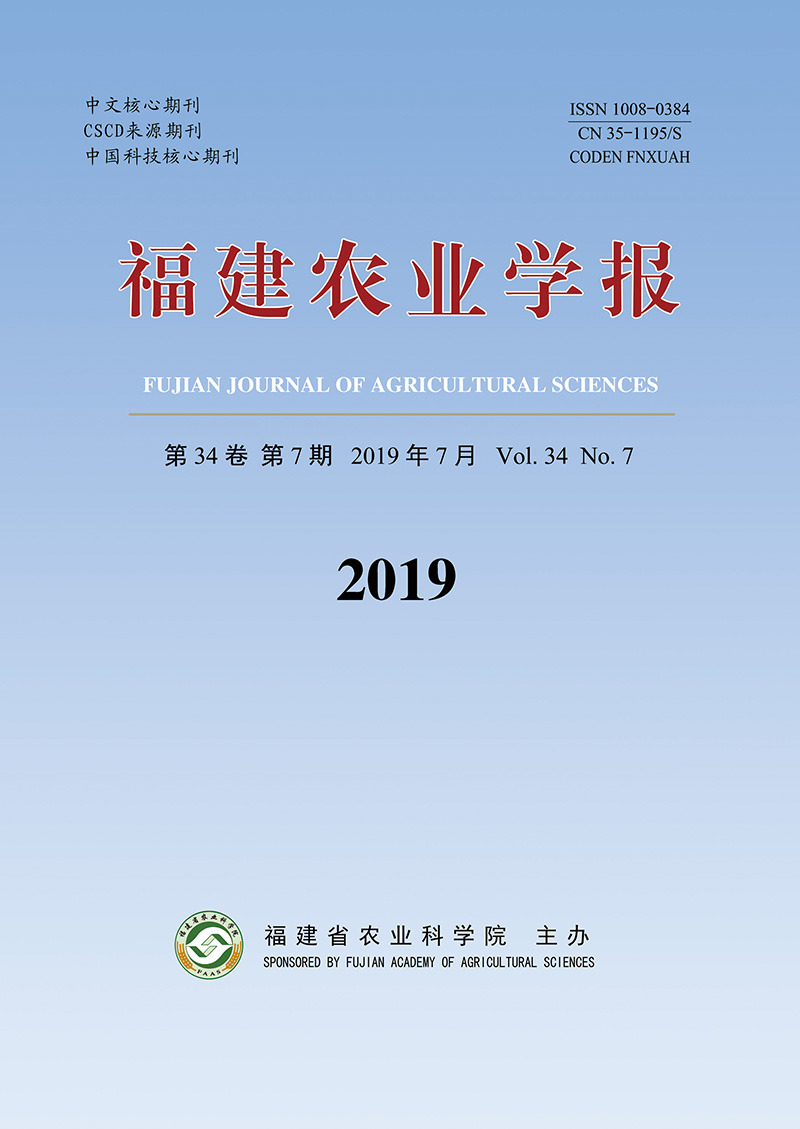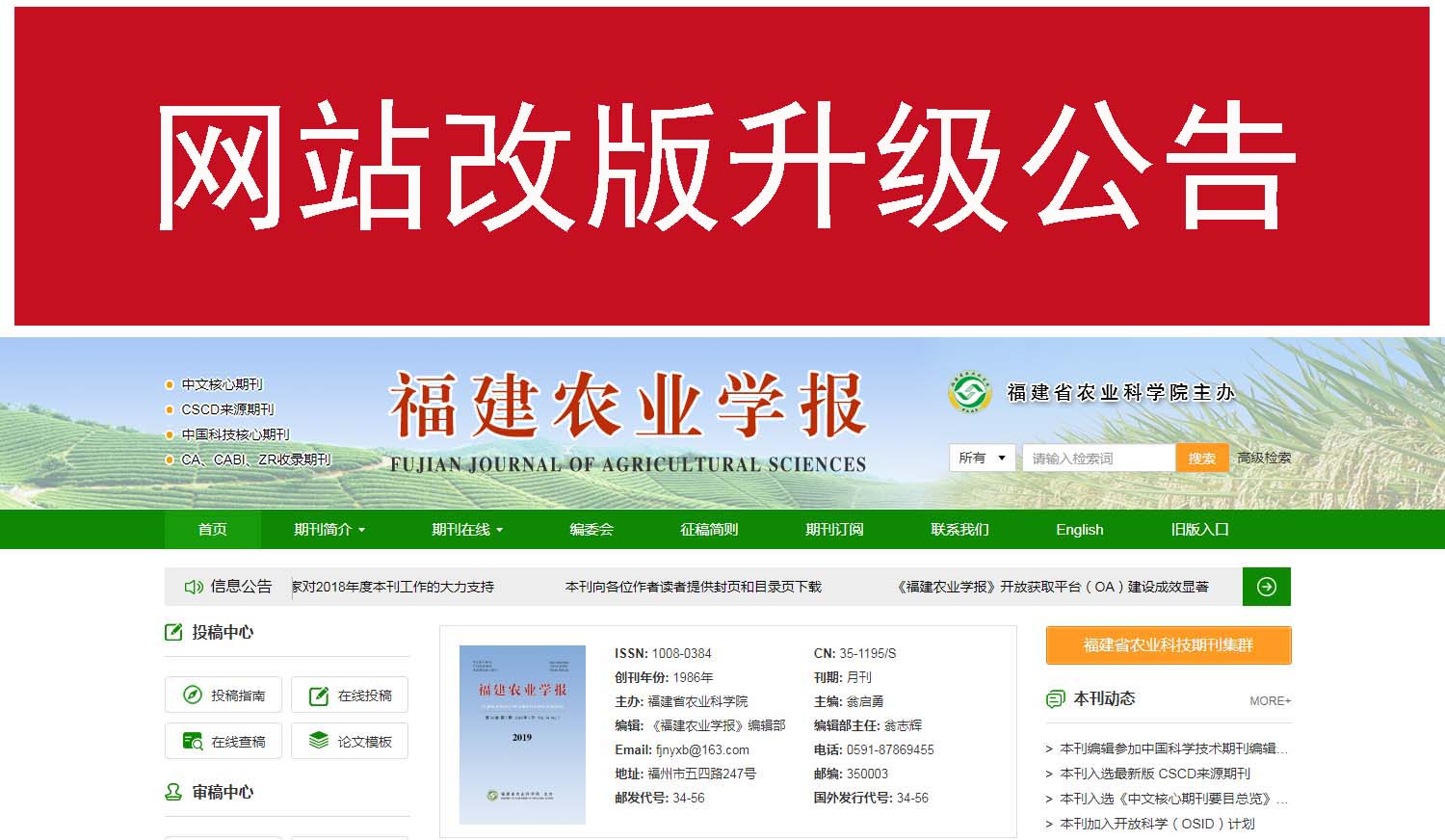Manuscript Central
Peer review Centre
Journal
Journal Information
-
ISSN 1008-0384
CN 35-1195/S
Supervisor: Fujian Academy of Agricultural Sciences
Host: Fujian Academy of Family Sciences
Editor:
Editorial Department of Fujian Agricultural Journal Editor-in-chief: Weng Qiyong
Editorial Director: Weng Zhihui
Tel: 0591-87869455
Email: fjnyxb@163.com
Address: No. 247 Wusi Road, Fuzhou
Zip code: 350003
Mailing code: 34-56
Advertising license: 3500004000070

Mobile phone opens our website

WeChat public address

Read the full text by mobile

Order this print edition

Order this print edition

Fujian Agricultural Journal is a comprehensive agricultural academic journal, which is managed and sponsored by Fujian Academy of Agricultural Sciences. It mainly publishes academic papers with high academic level and application value in the fields of agriculture and biological sciences. It is a national Chinese core journal and Chinese science and technology core journal. It has been published by CA, CABI, ZR, AGRIS and other countries.
...More
Current Issue
20 July 2019, Volume 34 Issue 7


 Instructions for Authors
Instructions for Authors Journal Dynamics
Journal Dynamics